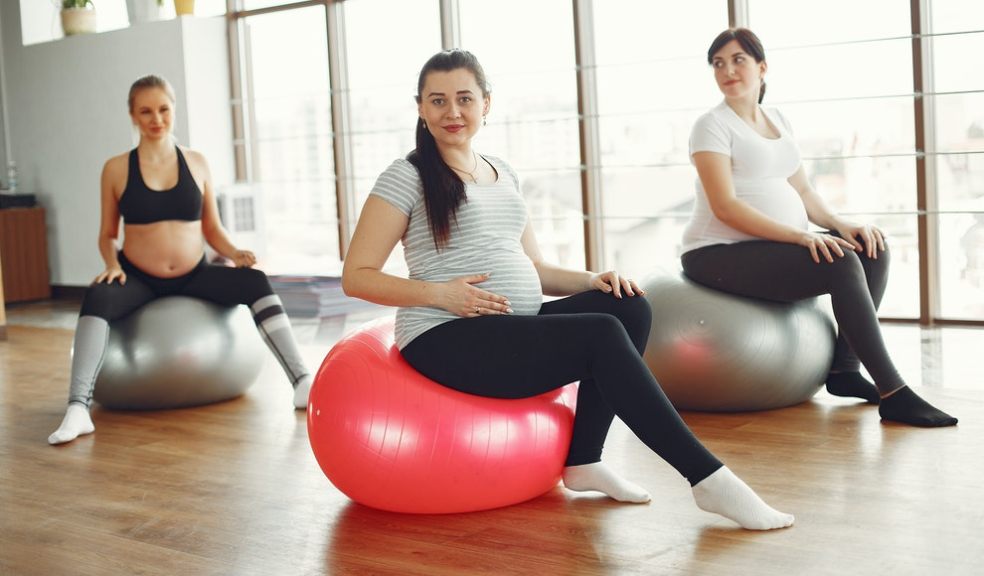
A Guide to Pregnancy Yoga Teacher Training
Yoga means union and aims to bring body and mind together within the present moment. In other words, it joins the mind with the sensations in the body. But what happens when a student carrying a body inside her body comes to a yoga class? Here is my guide to pregnancy yoga teacher training.
Practising yoga has become a very popular tool for pregnant women as it gently and mindfully stretches and strengthens the muscles which are important during pregnancy and delivery. With a deep focus on breathing and movement synchronization, yoga can aid most common prenatal symptoms such as tense hips, back and shoulder pain, tight neck, and even inflammation. Teachers working with pregnant students should be aware of these kinds of symptoms and create adapted flows suitable to release tension in particular areas, relevant to pregnant women. Nonetheless, yoga benefits are not only limited to physicality. A mindful yoga practice applied during pregnancy can also notably reduce stress and anxiety levels. Who doesn’t need that?
What Can Pregnant Women Expect from a Prenatal Yoga Class?
As it provides both mental and physical relaxation through practising yoga postures and breathing techniques, yoga plays an important role in pregnant yoginis’ lives and even serves as a morale booster, which can eventually prevent the baby blues and postnatal depression. Yoga teachers, therefore, must make sure that their class is a safe place to allow mums to completely surrender to the present moment. Because what differentiates yoga from other types of exercise is that students are taught to listen to their bodies, to move smoothly and be at ease. When expectant mothers connect with their bodies, they also connect with their babies, which takes their practice to a spiritual level. Expecting and getting ready for all kinds of emotions coming up during the practice will help teachers guide pregnant students during a yoga class.
Understanding the Physical Changes as a Yoga Teacher
The female body eminently changes during pregnancy. A yoga teacher, we must first understand the stages of pregnancy and their effects on the female body. For example, due to a hormone called relaxin, the pelvic area of pregnant women gets more flexible and opens, which requires meticulous attention during yoga classes. Another example of the physical changes that the female body goes through can be low blood sugar levels. Teachers often advise their students not to eat before the class. However, for a pregnant woman, this might not be possible, especially if she feels dizzy or nauseous. Hence, the teachers have to be aware of different circumstances that might arise.
During the first and second trimester, and also in all pregnancy yoga classes, teachers must be extra careful about some poses that apply backbends, inversions and deep twists. Yoga postures including these might either be avoided or applied cautiously as they contract or twist the internal organs.
Each body, during pregnancy, is unique. Connecting with students before class not only helps you communicate better but also ensures that it is safe for mum to practice. Therefore, before starting their lesson, it is always wise to ask students if there is something that the teacher should know about in terms of their physical or mental health, or any pregnancy related conditions. For ongoing pregnancy yoga classes, teachers might even engage with their students’ doctors or physios to avoid any risky situations. Preserving and improving women’s and their babies’ health becomes the main goal of pregnancy yoga classes.
Teachers should encourage women to modify the yoga poses and use yoga props such as yoga blocks or bolsters to help them go into the poses, as these will help focus on how they are feeling rather than the shape of the pose. It is also beneficial to remember that pregnant women can easily get tired. Encouragement to have a break or take a rest can play a vital role. Teachers must underline that whenever a pose feels too intense, students need to stop immediately and have a rest in child’s pose.
What to avoid
In each yoga lesson, it is important to observe students’ bodies and asana choices. However, for prenatal yoga classes, it is absolutely essential to watch and advise thoroughly. Due to the physical changes in mum’s body such as gaining weight, there will be some poses that should be avoided. For example, lying on the back for a long time can affect the circulation of the body. As another example, abdominal muscles inevitably work hard both during pregnancy and birth. To minimize poses that work out core area would be in favour of mothers’ bodies. Finding or even creating bump-friendly yoga asana variations is a must for teaching pregnancy yoga classes. For that reason, teachers must educate themselves in terms of the anatomical changes of the female body during this challenging yet beautiful period of their lives.
Including the Babies
It is important to remember that while a pregnant woman does yoga, the baby inside her body is affected by all of her movements as well. Teachers are advised to guide prenatal yoga lessons by taking this point into important consideration. During yoga poses and flows, taking a moment to acknowledge the presence of and bring awareness to their babies could increase the applicability of the lesson and it also helps mum build an emotional connection between mothers and their babies.
The Power of the Breath
Including pranayama exercises in pregnancy yoga classes is another noteworthy aspect that should not be skipped. Deep, slow, steady breaths stimulate the parasympathetic nervous system which provides relaxation for the entire body. Mothers become calm and tranquil through these serene breathing techniques, and their babies are also positively affected.
Moreover, students can apply these breathing techniques outside of their yoga classes, which can improve the quality of their daily lives, especially during stressful periods or if experiencing aches and pains.
A Safe Space for the mothers
You should never forget that the main reason that most women come to yoga class to relax. The daily lives of pregnant mums-to-be might already be fast and busy. While they are trying to adjust to both psychological and physiological changes of pregnancy, they also have to make sure that their lifestyle is suitable for their growing baby. It is, therefore, highly crucial to provide a space where these students feel comfortable and at peace.
Pregnancy yoga classes aim to bring balance to an expectant mothers’ physical, mental, emotional and spiritual state. Associating these classes with only a physical preparation for childbirth would be a real loss of an opportunity for so much more. Emotional support during these classes is certainly needed for mum and they often find that with their fellow students. Mothers witnessing your empathetic approach to teaching pregnancy yoga will feel more comfortable and confident in their changing bodies.

















